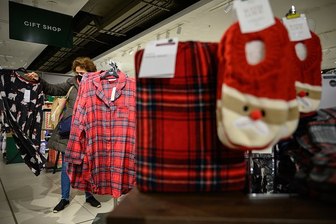Even though your brand may currently be riding high, changes in the marketplace and, subsequently, consumer behaviour need to be constantly monitored to ensure you don’t get left behind.
The digital, media and technology industries are evolving faster than perhaps any other. Therefore as consumers’ habits rapidly change, brands which don’t closely monitor key audiences will find themselves chasing the pack, rather than leading it.
The only way to ensure that your marketing strategy and propositions will resonate is by keeping up with changes in consumer behaviour on a rolling basis, and thereby gaining a deep understanding of the people you’re interested in.
If you’re basing your strategies on static insights drawn from traditional segmentations (which are normally created every two to five years) you could be inadvertently ignoring important changes in your audience’s behaviour. Examples of events in the world of digital, media, and technology which have had a significant effect on consumers over the last five years include:
Smartphones: the race to dominate the market
In 2011, almost a fifth (19%) of UK smartphone users owned a BlackBerry, and 14% owned a Nokia (Microsoft) Lumia. Five years later these figures have dropped substantially, while Samsung and Apple have flourished. Samsung has grown from a 9% share of the market to 29% and, as at September 2016, Apple boasts a 37% share.
Neither Nokia nor BlackBerry kept up with what consumers wanted. Nokia’s phone division entered into an ill-fated partnership with Microsoft instead of choosing popular Android software at the optimum time. BlackBerry refused to acknowledge the iPhone as a legitimate threat, and generally failed to adapt to the needs of its established audience of business people.
With up-to-date segmentations, both brands could have discovered what consumers were really looking for and adapted accordingly instead of assuming they would be happy with the status quo.
Wearables: two different types of users
More than five million adults in the UK own wearables, with 14% of non wearable owners intending to get one in the future. Of these, 12% intend to get one in the next three months. But this information, without knowing who these people are or what kind of wearable they want, is not enough.
For example, smartwatch owners are more likely to be male early adopters, while those who own activity trackers are more likely to be female and not so tech savvy.
Other factors such as lifestyle, personality, and attitudes to health and wellbeing also need to be continuously tracked when creating a segmentation. Only by having an in-depth and ongoing knowledge of your audiences can you market different products effectively.
Music: from vinyl to streaming and back again
How people buy and listen to music has arguably been one of the biggest changes over the past few decades – from vinyl, to tapes, to CDs, to downloads, and then to streaming.
More recently, the industry has had to cope with the realisation that, for many, ownership of music is less important than simply having access to it.
However, there is also a growing market for vinyl, which is increasing year on year.
These myriad ways people consume music mean that it’s vital to segment your audiences on an ongoing basis and in granular detail — so that you don’t miss out on changes in mainstream preferences as well as those of niche subsets of music fans.
Subscription services: the continued rise of video on demand —and branching out into new areas
Although some people may refuse to pay 79p for an app, they might happily pay upwards of £60 per year for subscription video on demand services such as Netflix or Amazon Prime. So how can you be sure which products or services your customers think are worth paying for?
To determine this, you have to know— and monitor over time —factors such as perception of value, purchase motivations, interests, how they spend their free time, and current subscriptions.
What’s more, as certain companies successfully diversify into new areas (e.g. Amazon producing exclusive shows and Sky’s NOW TV offering no-contract broadband and landline packages), knowing different customer segments’ expectations has never been more important.
Telecoms: an unlikely media comeback
A brand that could have gone the way of BlackBerry, BT has staged a remarkable resurgence, taking market share from younger competitors such as Virgin Media and Sky in the process.
While their audience is skewed towards older people, they also have a large following amongst the under-35s who are enticed by attractive content such as exclusive access to AMC (offering popular programmes including Breaking Bad) and BT Sport which has been a great success since its 2013 launch.
Some brands in these markets may have been surprised to see BT luring their customers away, which is why it’s vital to continuously track your customers’ needs, so you know who is likely to be considering a new competitor – and how you can keep them.
How YouGov can help
YouGov has worked with a number of global businesses to effectively segment their audiences and connect the data that informs their marketing communications. You can ‘plug in’ existing segmentations or start completely from scratch.
If you’re looking to gain a deeper understanding of the audiences you care about, read our guides to how ‘dynamic segmentation’ works or get in touch to find out more.









